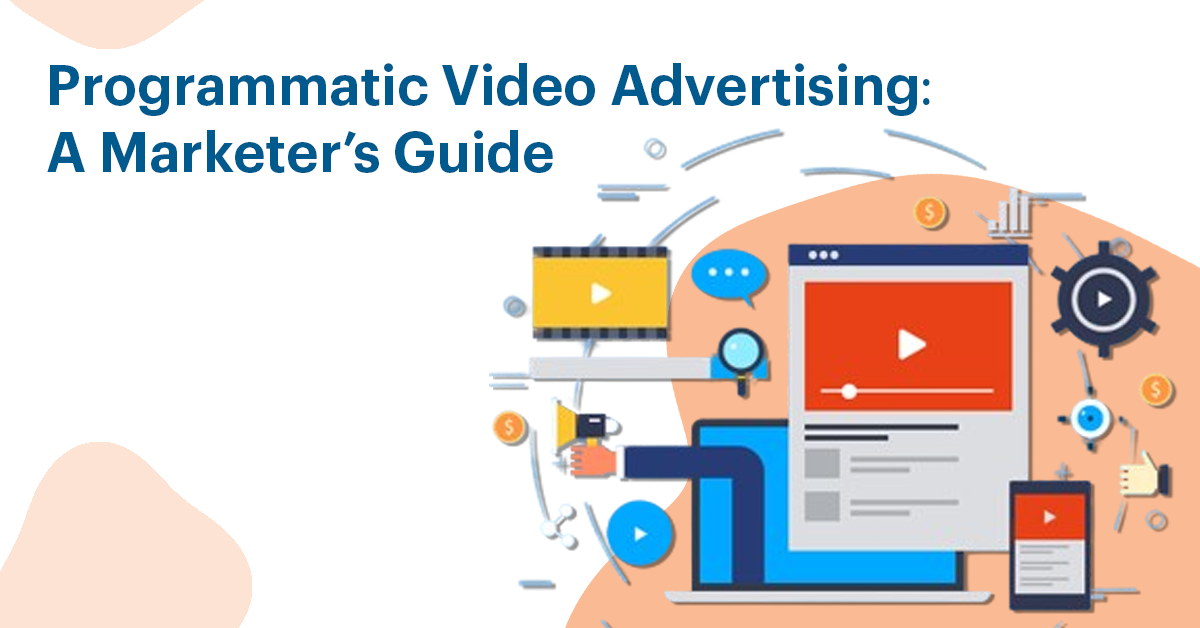The advertising industry is constantly evolving by introducing new platforms, channels, and formats. Video remains a crucial component of every advertiser’s media mix. eMarketer predicts advertisers will invest $62.96 billion in digital programming this year. It also predicts that more than 50% of the total digital programmatic advertising spending on display will be on video. This is clearly the perfect time for marketers to get their attention!
Advertisers must understand the concept behind programmatic video ads, explore the various programmatic video options available within the DSP, and recognize the benefits they bring to advertising campaigns. Need an update? You’re in the right place!
What is Programmatic Video Advertising?
The technology used in programmatic video advertising allows advertisers to purchase and distribute advertisements that appear in conjunction with other videos. Publishers and exchanges can distribute the ads in traditional display ad slots and across TV devices.

There are two categories that programming video could be categorized into two categories: video online and advanced television.
Video online
In the online video category, there are two main varieties to consider two types of video: out-stream and instream.
Instream video
Instream video can be viewed before (pre-roll) and in (mid-roll) or following (post-roll) streaming video. An example is the ads shown before YouTube videos (if you’re not running an extension to block ads, block ads!)
Outstream video
Outstream video plays out of the video player environment. This kind of ad usually includes less conventional video insertions, for example:
In-article or feed: Videos included in the article’s content or a feed
Native videos: Videos that resemble the look and feel of the video
In-banner: Video ads served through ads that display (320×50 slots are the most popular here)–these usually do not have audio or sound and are generally shorter in length
Interstitial: High-quality, full-screen videos that include the user interface of the web-based application or host’s app
Advanced TV:
Advanced TV is a broad word that refers to TV services provided outside of the conventional linear television model. It generally offers greater targeting and better measurement in comparison to linear television. Advanced TV features:
Over the over (OTT)
Over the top (OTT): Content that is broadcast in the preceding, middle the course of, or immediately after TV content, which is delivered through the internet, not via broadcasting via a cable or network. Although OTT is the term used to describe the content of the video, the term connected television (CTV) refers to devices connected to the internet (such as a Smart TV, tablet, or smartphone) that facilitate the delivery of video content.
Addressable TV
Contrary to OTT, Addressable TV is more in line with linear TV in the sense that it uses traditional distribution channels for serving video advertisements. What makes addressable TV different from linear TV is that it uses programmatic technology as well as audience segmentation to provide diverse ads to various households.
Programmatic TV
Using programmatic technology to pay for TV ads with linear lines. Of all the modern TV models discussed here, the programmatic TV type is most similar to traditional TV buying because it measures the reach and frequency.
Benefits of Programmatic Video
The purchase of video programmatically offers a range of advantages. Let’s take a look at the five most popular benefits:
1. Greater Targeting Precision
Advertisers can tap into information from both third-party and first-party sources when purchasing video programs, which lets them better target their audience.
2. Low Barrier to Entry
Programmatic technology means that advertisers no longer need to worry about excessive spending requirements or upfront contracts. Furthermore, the majority of auctions are sold on the basis of a changing CPM, and any cost efficiency generated by optimizations can be transferred to the advertisers’ wallets.
3. Increased Scale
If an advertiser decides to purchase videos programmatically, they have access to over 40 exchanges with one purchase. Furthermore, due to the development of cross-device, targeted advertisers can reach users who have seen their advertisement across many devices, providing a greater rate of recall and more frequent messages from videos.
4. Greater Agility
Because advertisers do not have to deal with middleman publishers when purchasing programmatic video advertisements, they can easily update their video content, shut off any creative that isn’t performing optimally, and adjust their target audience in real-time.
5. Advanced Reporting
The programmatic purchase of video offers advertisers an array of performance-related metrics to examine, as well as the ability to cut and cut performance information according to DMA, audience size, and much more. There are issues with reporting on advanced TV based on how you choose to buy the product. If you’re purchasing conventional TV advertisements like those you buy from traditional TV, it’s impossible to measure things like click-through rates and viewability.
—
While advertisers can leverage many methods to program video, the use of CTV advertisements is becoming increasingly crucial. CTV has been driving the substantial expansion of digital video ad expenditures, and it proved most effective during the 2025 US elections.

